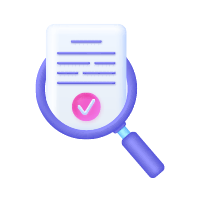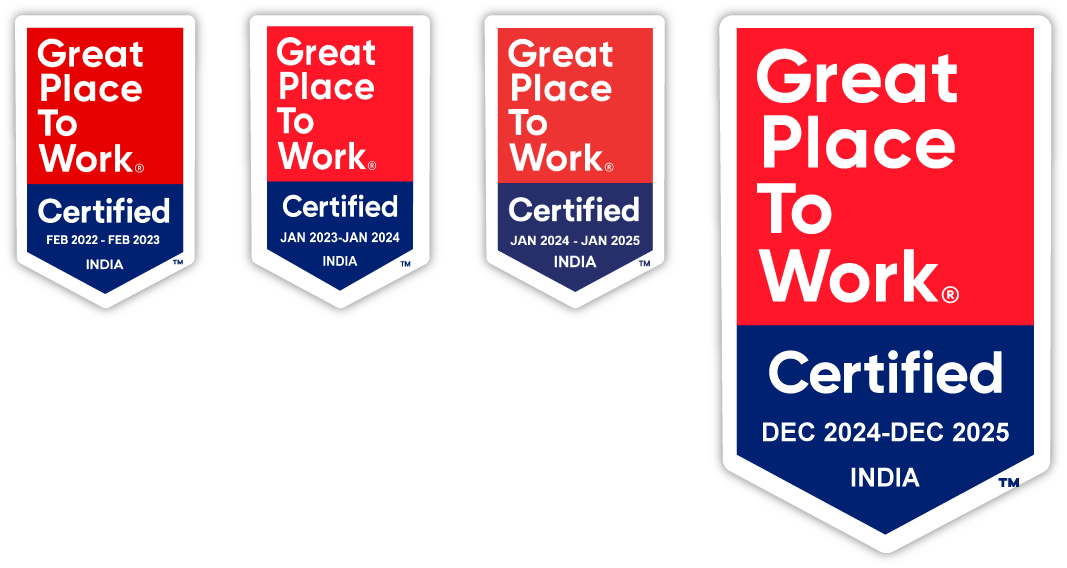Contributors : Radha Saradhi Reddy Thammineni, Rosario Muthu Rajan Vincent Xavier, and Shawani Shome
Date : July 2025
How organizations in healthcare, diagnostics, FMCG, and life sciences can overcome digital transformation challenges
Executing ELN-LIMS integration isn’t just a technical upgrade; it’s a multidimensional transformation that requires alignment across systems, people, and regulatory mandates. Many digital initiatives in laboratories fail not due to lack of ambition, but due to gaps in planning, execution discipline, and stakeholder alignment. To overcome these pitfalls, organizations must approach integration as a strategic program, not just a software project. This section provides a step-by-step framework to help labs assess their needs, select the right partners, configure systems effectively, and drive adoption—all while maintaining regulatory compliance.
Execution framework for success
Successful ELN-LIMS integration demands disciplined execution across technical, organizational, and regulatory dimensions. Implementation failures often stem from inadequate understanding of requirements or insufficient stakeholder engagement. The following framework outlines key principles for success.
Comprehensive needs assessment
Effective integration begins with a thorough assessment that translates operational challenges into strategic requirements. This foundation phase defines project scope, success metrics, and resource allocation:
- Engage all stakeholders—lab managers, scientists, IT, and quality assurance teams.
- Map complete workflows from sample receipt to reporting before vendor selection.
- Identify architectural optimization opportunities beyond immediate symptoms.
- Define clear success metrics and business value targets.
- Assess regulatory requirements specific to your industry environment.
Strategic vendor selection
Vendor selection represents a critical decision with long-term implications. Organizational objectives, not vendor sales cycles, must drive the process. Market evaluation should be based on established User Requirements Specifications that differentiate between general-purpose and specialized solutions:
- Conduct structured demonstrations using scripted, real-world scenarios.
- Implement proof-of-concept projects to validate performance beyond marketing claims.
- Use a rigorous RFP process with objective scoring frameworks.
- Analyze total cost, including implementation, maintenance, and training.
- Verify compliance capabilities—not all vendors meet the same regulatory standards.
Configuration and architecture
A disciplined approach to system setup is critical. Excessive customization creates cost burdens, maintenance complexity, and implementation risks. Prioritize configuring standard system features wherever possible, reserving customization only for essential, business-critical functions:
- Prioritize configuration over customization to reduce complexity.
- Ensure API compatibility and data standardization requirements.
- Leverage cloud platforms for scalability and collaboration benefits.
- Plan integration architecture for future system additions.
- Document all configuration decisions for ongoing maintenance.
User-centered change management
Change management failures are a primary cause of implementation difficulties. Deploying software without ensuring hands-on involvement from end-users leads to adoption challenges. High-performing teams typically aim for change failure rates below 15%, with rates above this threshold indicating inadequate testing methodologies or deployment protocols.
- Involve end-users in system design and implementation to ensure the new workflows meet their needs.
- Begin User Acceptance Testing (UAT) with end-users early, even before the software is finalized, to gather valuable feedback.
- Design training programs that emphasize workflow improvements and benefits, not just technical features, to build user confidence.
Validation and compliance framework
In regulated industries, validation prevents costly system modifications or replacements later. Planning must begin during vendor selection, not after implementation, to ensure that chosen platforms meet all data integrity and security requirements (FDA 21 CFR Part 11, GxP).
- Establish clear documentation standards and data governance.
- Plan ongoing compliance assessments for evolving regulations.
- Create regular monitoring processes to maintain compliance over time.
- Document all validation activities for regulatory inspections.
- Ensure chosen platforms support the required compliance frameworks.
When to seek strategic guidance for implementation
ELN-LIMS integration complexity often exceeds internal capabilities, making strategic guidance valuable during critical phases like requirements definition, system selection, and validation. Experienced advisors accelerate project timelines, reduce risk, and bridge expertise gaps, particularly for organizations lacking laboratory informatics experience or facing complex regulatory demands.
Assessing internal capabilities and readiness
The first step is a frank evaluation of the team’s readiness. Successful implementation requires a unique combination of scientific, regulatory, and technical expertise that differs significantly from typical IT projects. Evaluate internal capabilities across these key domains:
- Laboratory operations: Understanding sample workflows, quality control processes, and instrument integration.
- Regulatory compliance: Specialized knowledge of industry frameworks (GxP, CLIA, EPA).
- Technical architecture: Cloud-native architectures and API integration strategies.
- Change management: Driving adoption among scientific staff with unique requirements.
Organizations lacking prior experience in laboratory informatics should consider strategic guidance, as the required knowledge may not be developed within typical project timelines.
Evaluating risk and complexity
The decision to seek guidance should reflect the organization’s risk tolerance relative to project complexity. High-stakes implementations with significant operational or regulatory implications typically justify external expertise as risk mitigation.
Scenarios requiring external support:
- Large-scale legacy system replacements.
- Projects driven by fixed regulatory deadlines.
- Complex, multi-site, or global deployments.
- Advanced technical requirements exceeding internal IT capabilities.
- Integration across multiple vendor platforms requires specialized architecture.
Proper architecture design for performance, scalability, and compliance requires specialized experience with laboratory-scale data management that internal teams may lack.
Analyzing strategic value and financial return
Strategic expertise accelerates implementation and system optimization, providing a competitive advantage through faster operational improvements. Commercial off-the-shelf solutions require experienced implementation teams to realize their full potential.
Value Proposition Analysis:
- Access to proven methodologies and cross-industry best practices that may be unavailable internally.
- Knowledge transfer components that build long-term internal capabilities.
- Risk mitigation—regulatory violations can cost millions in remediation.
- Opportunity cost assessment of diverting internal staff from core business activities.
- Faster time-to-value through accelerated implementation and optimization.
The financial analysis must extend beyond initial costs to include risk mitigation value and internal resource allocation opportunity costs.
Decision framework and partner selection
External expertise should be engaged when specialization requirements, complex architectures, or demanding timelines exceed internal capabilities.
Partner selection criteria:
- Verified industry and technical experience with similar implementations.
- Proven project management methodologies with measurable success rates.
- Cultural alignment with your organization’s values and working style.
- Commitment to knowledge transfer that builds internal expertise rather than creating dependence.
- References from similar organizations facing comparable challenges.
Strategic guidance can provide access to proven methodologies and cross-industry best practices that accelerate implementation success and build sustainable internal capabilities.
Case Study: ELN-LIMS integration implementation

Our client
An EU-based, mid-sized pharmaceutical company specializing in research and development sought to centralize target discovery data through a unified ELN-LIMS platform implementation.

Client’s challenge
Research data was scattered across disparate Excel spreadsheets, standalone databases, and manual tracking systems. Experimental documentation existed separately from laboratory inventory, creating inefficient workflows and preventing real-time data access. Research teams spent excessive time manually consolidating information, which introduced errors and slowed research cycles.
Key problems included:
- No connection between experimental protocols and physical sample locations
- Manual data reconciliation requirements
- Error-prone processes due to disconnected systems
- Inability to access real-time experimental and inventory data simultaneously
Solution and implementation
An API-first, cloud-native architecture was implemented in two phases.
Phase 1: Data validation
The initial phase focused on rigorously checking and preparing data and resolving inconsistencies between databases and spreadsheets to ensure data integrity.
Phase 2: System integration
The second phase implemented automated bulk data uploads that dynamically linked experimental records in the ELN with physical sample data in the LIMS. Comprehensive stakeholder engagement ensured the final workflow matched actual research practices.
Outcome
The integration successfully transformed the client’s research operations.
- Complete traceability: The system eliminated manual data reconciliation and achieved complete, end-to-end traceability from physical sample to experimental result.
- Accelerated research cycles: Automated workflows provided simultaneous access to experimental and sample data, significantly speeding up research processes.
- Foundation for innovation: The integrated platform established the necessary data foundation for future AI and advanced analytics capabilities.
Conclusion
Laboratory organizations are at a critical juncture: continue with fragmented systems or transform operations through strategic ELN-LIMS integration. The evidence demonstrates that integrated platforms deliver measurable competitive advantages across operational efficiency, regulatory compliance, and innovation capabilities. While the path requires disciplined execution and an honest assessment of internal capabilities, the return on investment is clear. Organizations that embrace integration build the unified data foundation necessary for AI-readiness and sustainable market leadership, while those maintaining the status quo risk escalating operational disadvantages.
Five key takeaways
- Integration delivers measurable ROI: ELN-LIMS integration achieves quantifiable improvements, including 30-40% productivity increases in mature lab environments, more than 50% reduction in quality-control costs, and a 40-75% reduction in overall lab lead times .
- Regulatory excellence becomes a competitive advantage: Integrated platforms reduce audit preparation time from weeks to days, accelerate regulatory submissions, and create automated compliance capabilities that position organizations as preferred partners while avoiding costly penalties.
- AI-Readiness demands integration: Future competitive advantage depends on AI and machine learning capabilities, requiring unified, high-quality datasets. AI-discovered drugs demonstrate 80-90% success rates in Phase 1 trials compared to traditional 40-65% rates, but only integrated ELN-LIMS platforms can provide the data foundation for predictive modeling and automated insights.
- Strategic planning determines success: Implementation success requires a comprehensive needs assessment, objective vendor evaluation, configuration discipline, and user-centered change management. High-performing teams maintain change failure rates below 15% through proper testing and deployment protocols.
- Strategic guidance accelerates outcomes: Organizations benefit from specialized expertise during system selection, planning, and validation, especially when internal teams lack specific laboratory informatics experience or when demanding timelines require proven methodologies.
References:
- Future Market Insights, Electronic Lab Notebook Market, 2024. Available at: https://www.futuremarketinsights.com/reports/electronic-lab-notebook-eln-market
- McKinsey, Rewired Pharma Companies in Digital Age, 2023. Available at: https://www.mckinsey.com/industries/life-sciences/our-insights/rewired-pharma-companies-will-win-in-the-digital-age
- BioPharma International, Regulatory Submission Efficiency, 2024. Available at: https://www.biopharminternational.com/regulatory-efficiency-analysis
- FDA Regulatory Compliance Analysis, Pharmaceutical Penalties, 2023. Available at: https://www.fda.gov/regulatory-compliance-penalties-2023
- McKinsey, AI in Drug Discovery Acceleration, 2024. Available at: https://www.mckinsey.com/industries/life-sciences/our-insights/rewired-pharma-companies-will-win-in-the-digital-age
- Artificial Intelligence (AI) Applications in Drug Discovery and Drug Delivery, PMC, 2024. Available at: https://pmc.ncbi.nlm.nih.gov/articles/PMC11510778/
- LabVantage, Turning Challenges into Success: LIMS Implementation Best Practices, 2024. Available at: https://www.labvantage.com/blog/turning-challenges-into-success-best-practices-for-lims-implementation/
- LaunchDarkly, Change Failure Rate: What It Is & How to Measure, 2019. Available at: https://launchdarkly.com/blog/change-failure-rate/
- PubMed, LIMS User Acceptance Testing, 2003. Available at: https://pubmed.ncbi.nlm.nih.gov/14660299/
- CloudLIMS, Build vs. buy LIMS: A key decision for modern laboratories, 2025. Available at: https://cloudlims.com/build-vs-buy-lims-system/
- Excelra, Seamless Data Migration to Benchling: A Case Study in Biotech Innovation, 2024. Available at: https://www.excelra.com/wp-content/uploads/2024/03/Seamless-Data-Migration-to-Benchling.pdf


